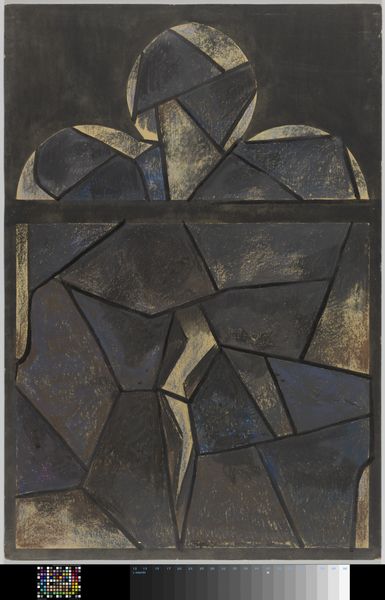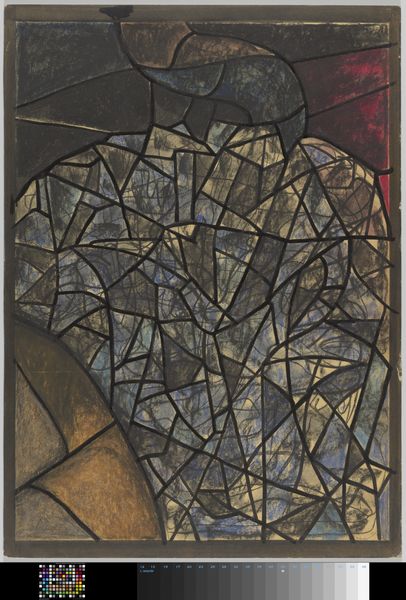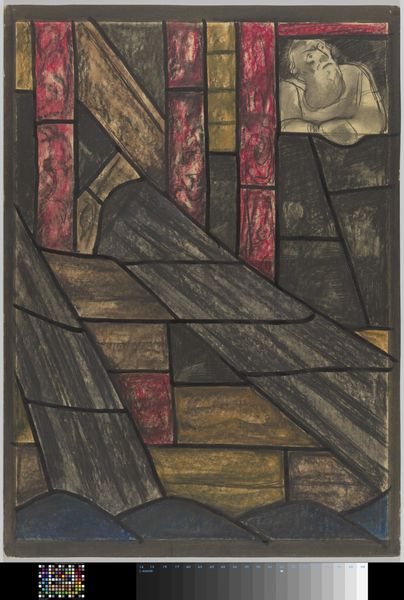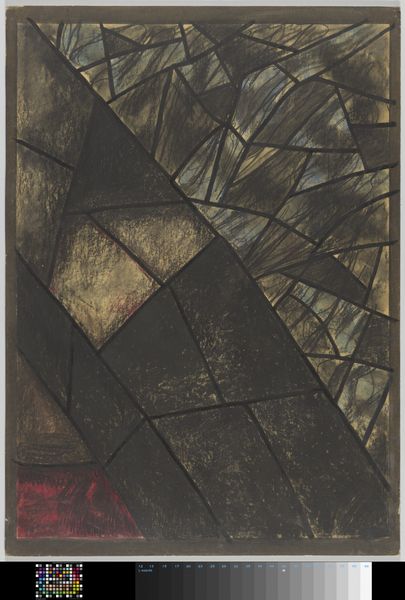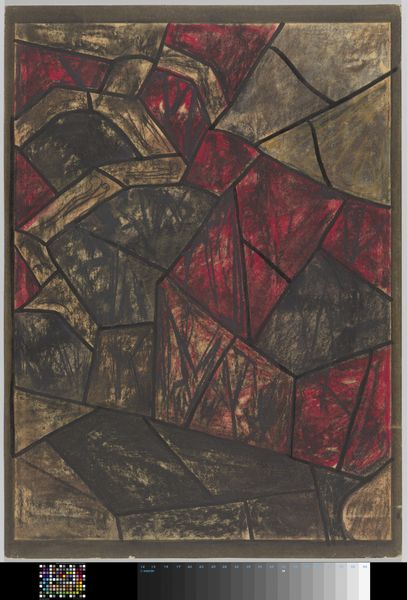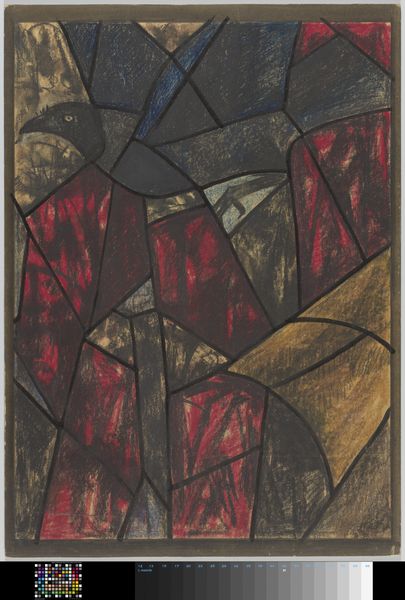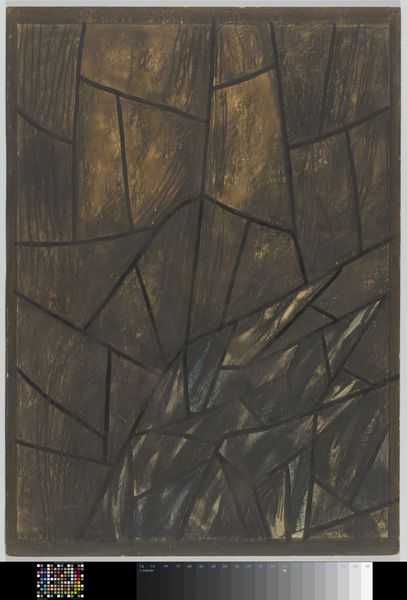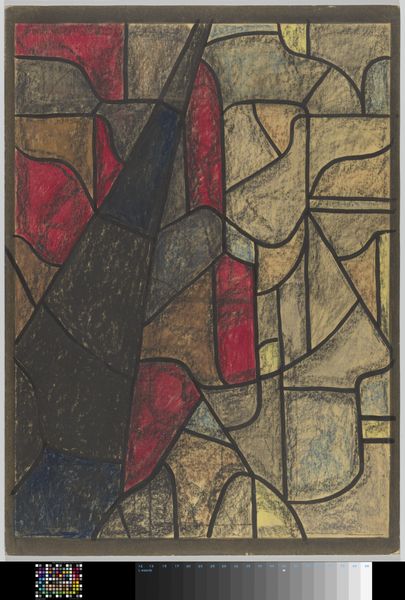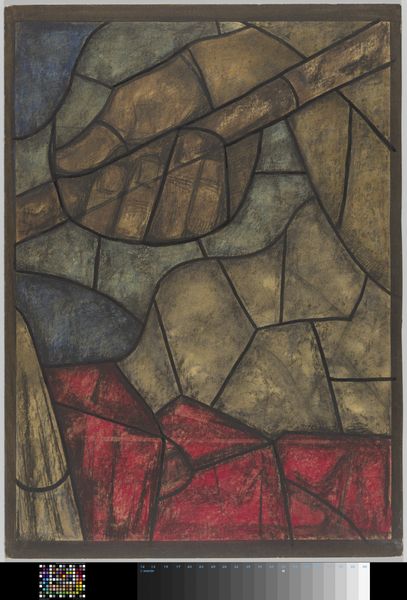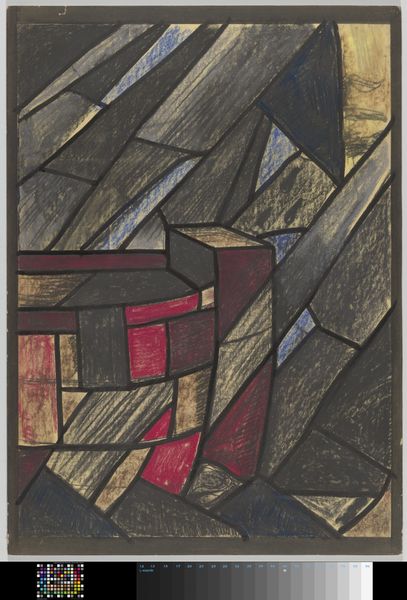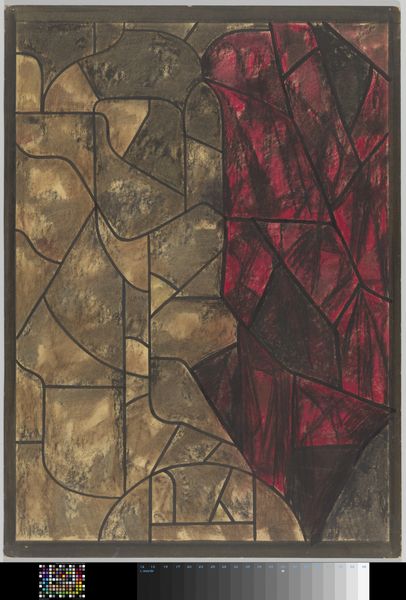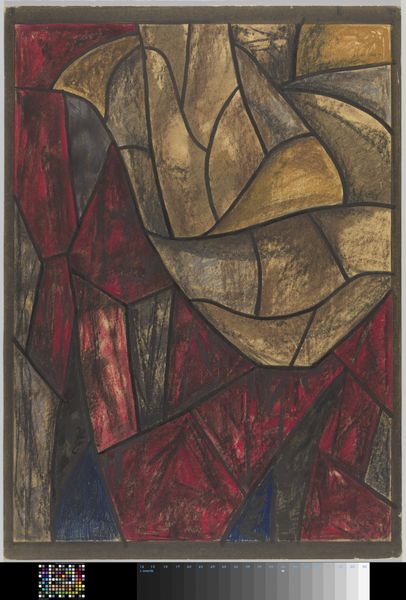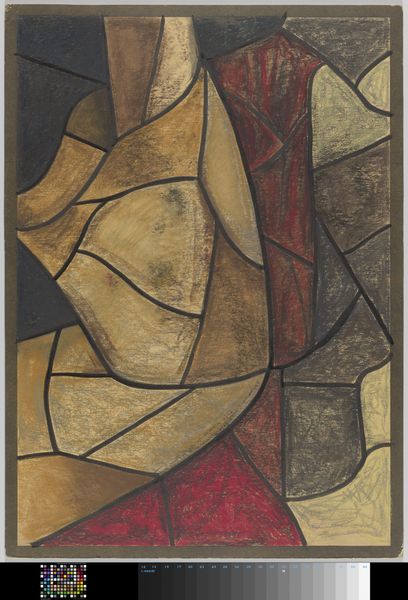
Ontwerp voor raam in het Noordertransept in de Dom te Utrecht c. 1934
0:00
0:00
richardnicolausrolandholst
Rijksmuseum
Dimensions: height 1123 mm, width 808 mm
Copyright: Rijks Museum: Open Domain
Curator: Before us, we have Richard Nicolaüs Roland Holst's design for a window in the North Transept of the Utrecht Cathedral, circa 1934. It’s a drawing on paper, utilizing pencil and possibly other mediums. Editor: My first impression is how brooding it feels, despite its geometric nature. The heavy lines and dark tones give it a sense of solemnity, even architectural weight. Curator: Indeed. Holst was deeply invested in socialist ideals, and he saw stained glass, particularly within the context of religious structures, as a means to communicate social narratives. This was commissioned at a time of societal upheaval; a reflection of the depression-era anxieties but also an articulation of hope through a unified design. Editor: Focusing purely on form, notice how the composition guides the eye. The fragmented planes create a complex interplay of light and shadow, almost deconstructing traditional religious iconography into abstract components. What is the effect of that tension between recognizable form and abstraction? Curator: I believe that tension is Holst's deliberate commentary on the changing role of religion in society. It’s not merely about depicting religious figures but representing faith as a structure, a framework susceptible to shifts and interpretations within its socio-political reality. The fractured glass visual metaphor signifies those strains and challenges to organized religion amid rising secularism. Editor: Yet, it retains an undeniable monumentality through its composition and color choices. The limited palette intensifies focus on the architecture of form and line and heightens a visual tension. Curator: I concur. Holst likely employed those aesthetic restraints to encourage the viewer to look deeper into not just the superficial but also the intrinsic nature of devotion and service—tenets he connected closely with his leftist political commitments. This echoes notions in contemporary liberation theology of questioning established church hierarchies, wouldn't you say? Editor: Viewed structurally, this design, though intended for the spiritual realm, exists autonomously as an exploration of geometry and materiality. I do wonder if the choice of medium, a seemingly fragile pencil on paper, influences our experience, emphasizing vulnerability despite the artwork’s imposing scale. Curator: Reflecting on this piece, it's evident that Holst intended for it to be far more than decorative, serving instead as an embodiment of shifting ideologies—questioning not only faith but how spaces might both shape and be shaped by communal belief and anxieties. Editor: Agreed. Even through our very different approaches, we recognize this work's success is uniting aesthetic design with profound structural and intellectual exploration.
Comments
No comments
Be the first to comment and join the conversation on the ultimate creative platform.
